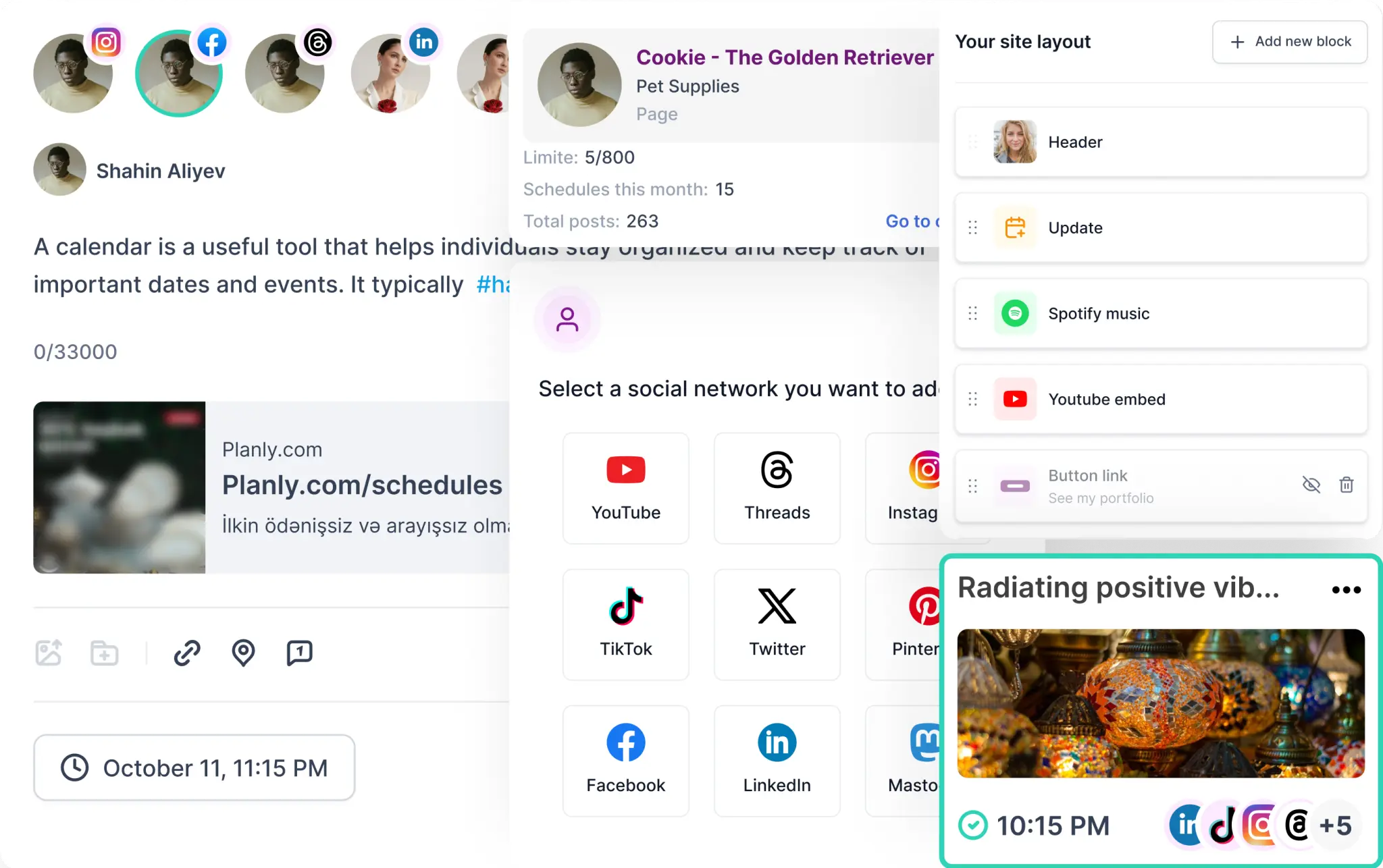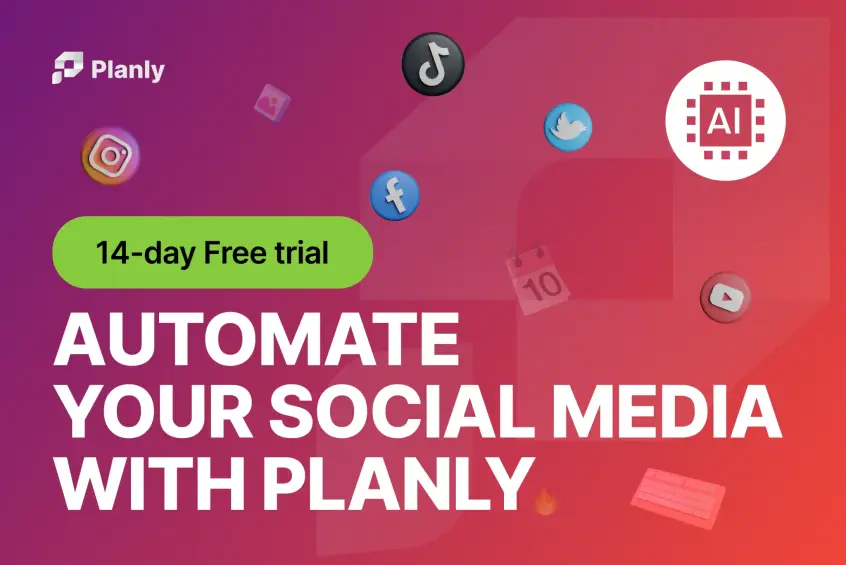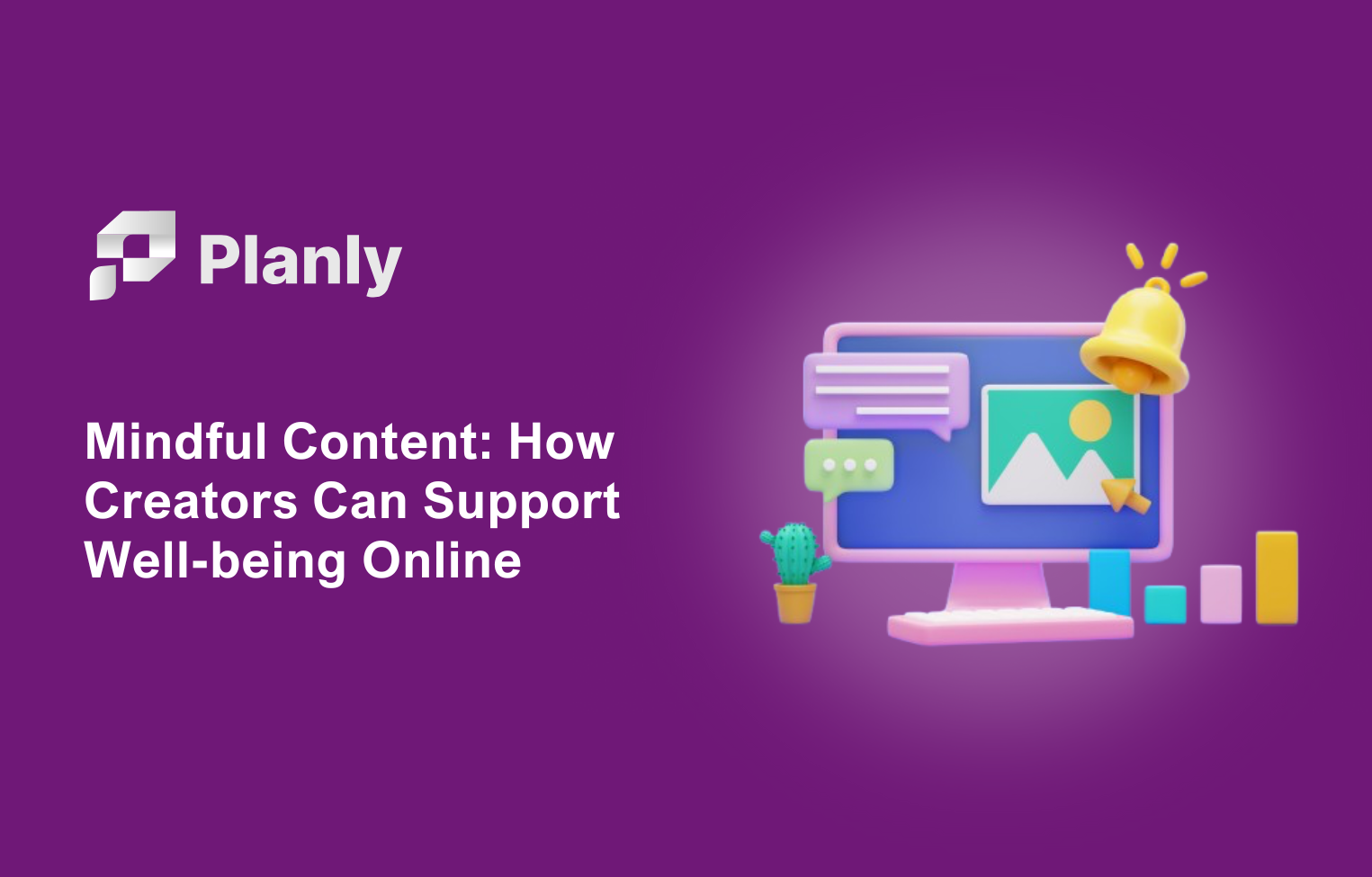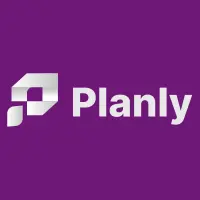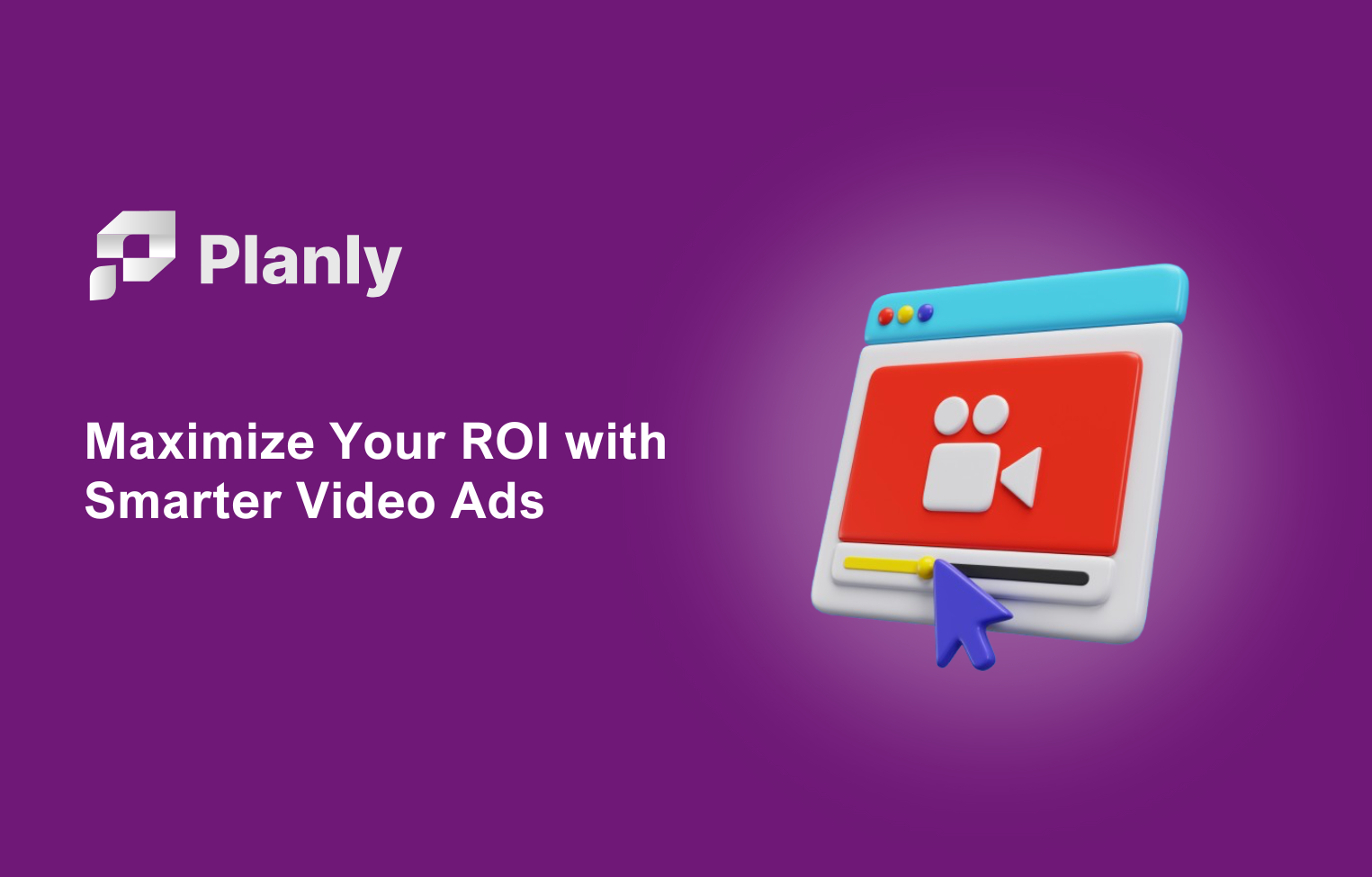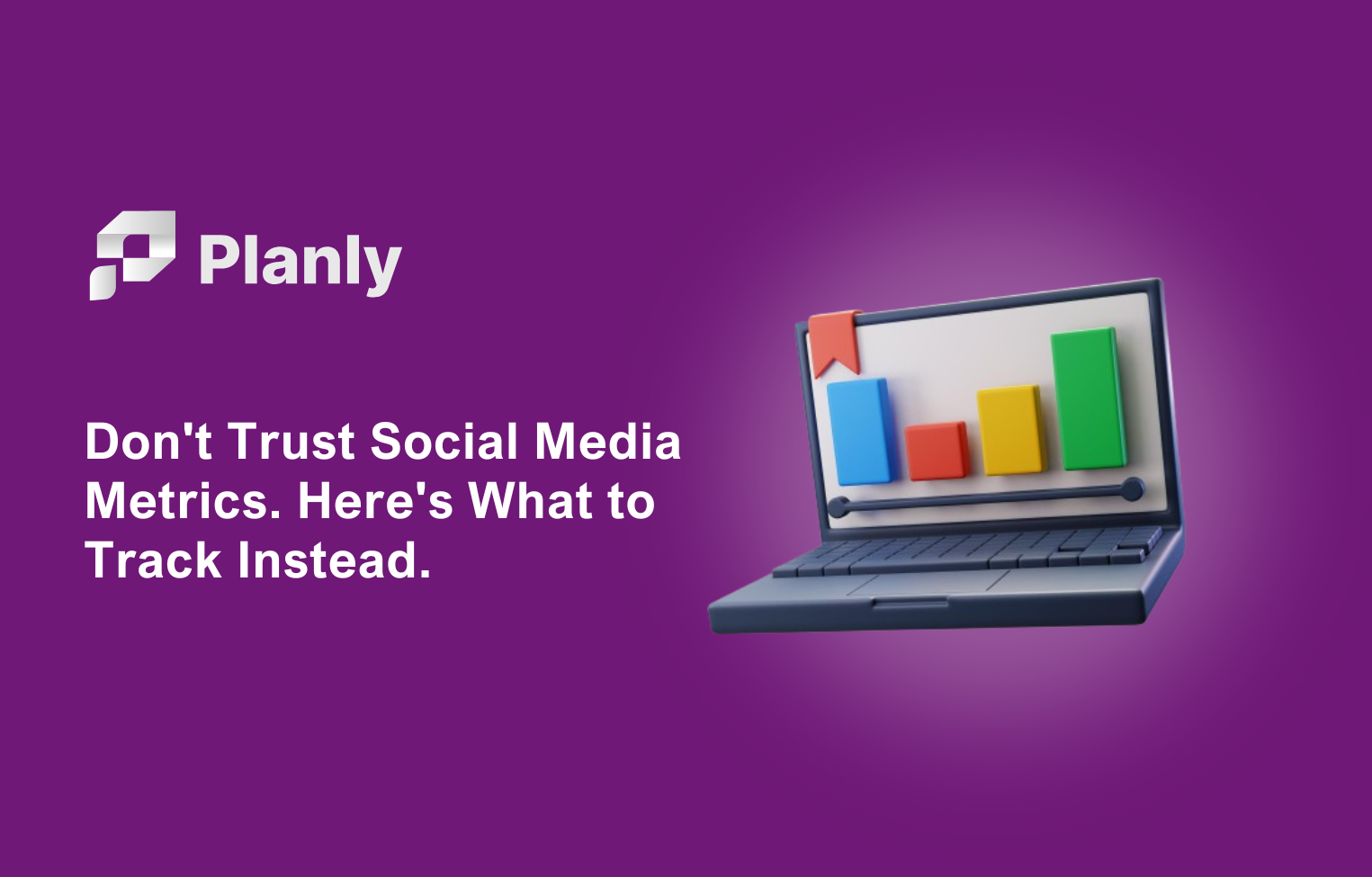Introduction
Modern day social media provides a channel through which people interact with others and businesses as well. It is a platform for promoting a company’s name, marketing its services, and developing the overall business. Nevertheless, considering the fact that there are several social media accounts to be handled, it is like fire dancing while balancing on a blade of a sword. But don't panic! in this blog, I'm not just sharing tips, I'm giving you a toolkit to manage multiple social media platforms effectively, without breaking a sweat.
1. Understanding Different Social Media Platforms

Let's start by taking a stroll through the landscape of social media. Each platform is like a different country, with its own culture, language, and customs.
• Facebook: The friendly neighborhood where building relationships and engaging with a broad audience is key.
• X (formerly Twitter): The bustling city square where timely and relevant updates set trends.
• Instagram: The trendy art gallery ideal for visual storytelling through images and videos.
• LinkedIn: The professional networking event for sharing industry insights and connecting with peers.
• TikTok: The energetic dance club focused on creativity, fun, and the latest trends.
2. Developing a Unified Social Media Strategy

Now, how do we tie all these unique platforms together under one strategy? It's like conducting an orchestra each instrument plays a different part, but together they create a harmonious melody.
Using social media automation tools helps maintain a cohesive approach across all platforms, making it easier to implement a unified social media strategy.First, you need a cohesive online presence. Your brand's voice should be like a familiar face that your audience recognizes across all platforms. But remember, being consistent doesn't mean being repetitive. You can tell the same story in different ways, depending on the platform.
3. Efficient Content Planning and Scheduling
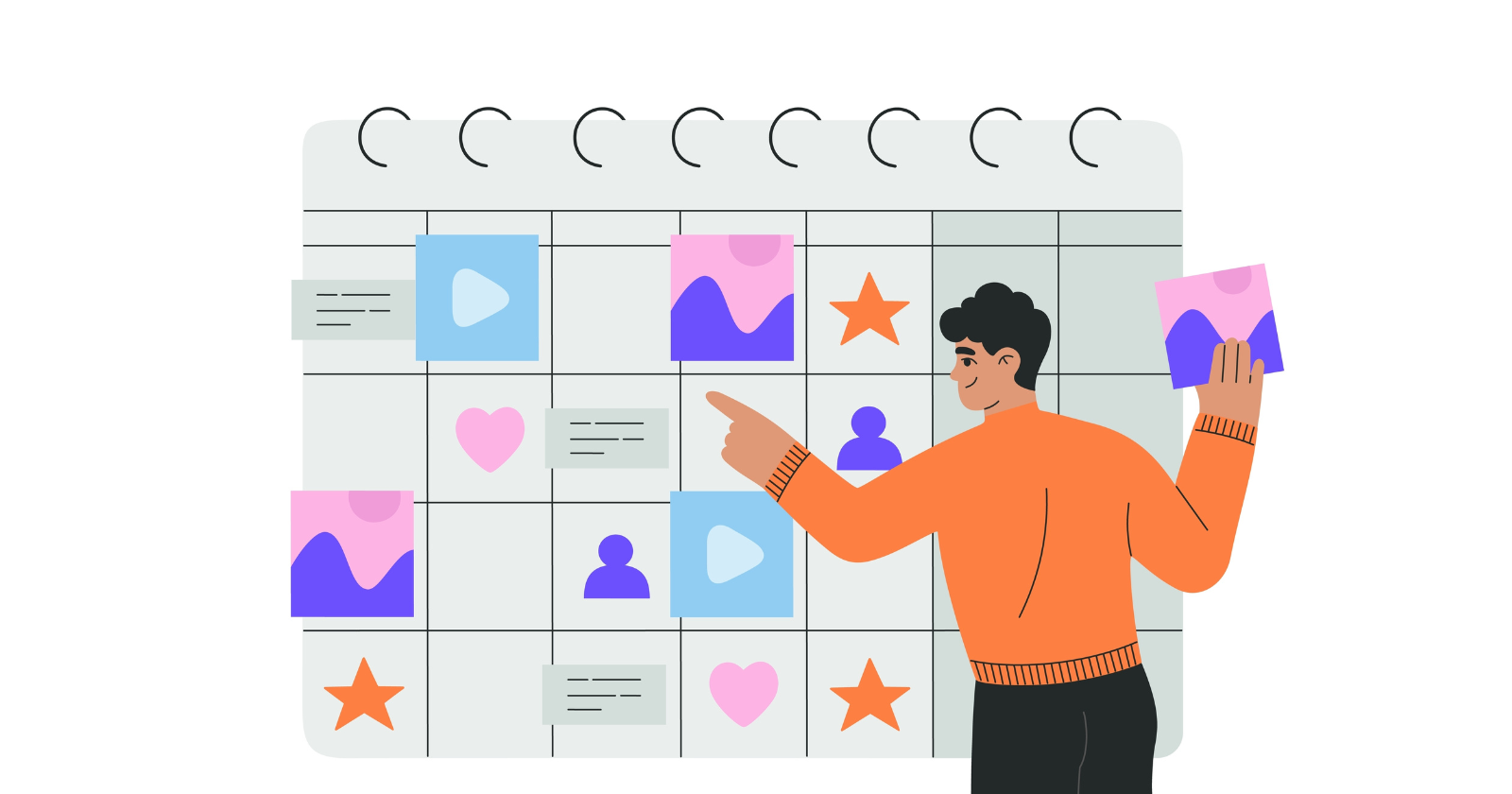
Efficient content planning and scheduling is like meal prepping for the week – you do the hard work upfront, so you have more time to enjoy later.
- Content Calendars: These are your best friends. Just like a calendar reminds you of important dates, a content calendar keeps your posts organized. It's a roadmap for what to post, when to post, and where to post.
- Scheduling Posts: Imagine you're a chef in a busy kitchen. You can't cook everything at once, right? Similarly, scheduling posts allows you to 'cook' your content at different times. Tools like Planly are the stoves in your social media kitchen, letting you prepare your posts and serve them at the perfect time.
- Repurposing Content: Here's a secret – you don't always have to reinvent the wheel. A single piece of content can be repurposed across different platforms with a little creativity. For example, a blog post can be broken down into several tweets, a few Instagram stories, and a LinkedIn article. It's about making the most of what you have.
4. Tailoring Content to Each Platform

You wouldn't wear a swimsuit to a business meeting, right? Similarly, what works on one platform may not work on another.
- Customizing Messages: It's all about context. For instance, Instagram loves visuals, so you might share a stunning image with a short, inspiring caption. On LinkedIn, a detailed, thought-provoking post about industry trends would resonate more.
- Understanding Platform Requirements: Each social media has its quirks. Instagram has a 30 hashtag limit, X has a 280-character limit, and Facebook loves longer, storytelling posts. It's like knowing the rules of different sports – you play differently in soccer than you do in basketball.
5. Leveraging Automation and Management Tools
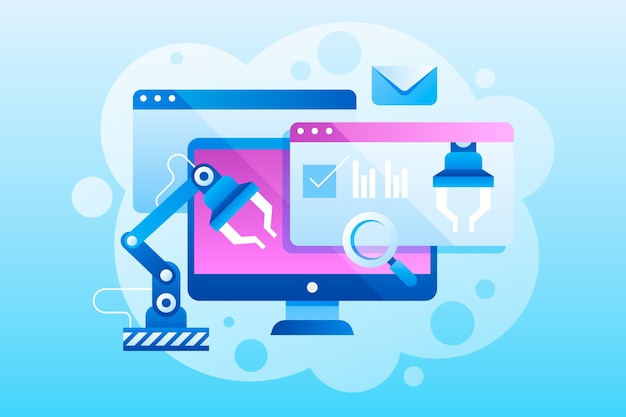
Automation and management tools in social media are like having a personal assistant – they make your life easier.
- Introduction to Tools: There's a plethora of tools out there – Hootsuite, Buffer, Sprout Social, to name a few. These tools help you schedule posts, monitor conversations, and track engagement across multiple platforms.
- Saving Time with Automation: Automation can be a game-changer. For example, scheduling posts in advance can save you hours each week. But, it's important to balance automation with real-time engagement. Social media is about being 'social,' and real-time conversations can't always be automated.
- Balancing Automation and Authenticity: While these tools are fantastic, nothing beats genuine, spontaneous interaction. When I managed a social media campaign for a local cafe, we automated promotional posts but always made sure to respond to comments and messages personally. This blend of automation and personal touch kept the audience engaged and connected.
6. Engaging with Your Audience Across Platforms

Engagement is the heart of social media. It's like hosting a party – you want to talk with your guests, not just talk at them. Here's how you can foster meaningful interactions:
- Techniques for Fostering Engagement: Ask questions, run polls, or start discussions. It's like tossing a ball into a crowd – it encourages people to throw it back. On X, I often ask open-ended questions to spark conversations. On Instagram, using interactive stories like polls or Q&As can get people involved.
- Handling Feedback: Social media is a two-way street. Responding to comments, messages, and feedback shows your audience that you value their input. I remember managing a campaign where we actively sought customer feedback on Facebook. It not only provided valuable insights but also built trust and loyalty.
- Building a Community: This goes beyond just selling a product or service. It's about creating a space where people feel connected. Hosting live sessions, sharing user-generated content, and recognizing your followers can create a sense of community.
7. Monitoring and Analyzing Your Performance

What's working? What's not? Just like a scientist conducting experiments, you need to track your social media performance.
- Importance of Analytics: Analytics are your measuring tapes. They tell you how many people you reached, how they engaged, and what content resonated the most. Tools like Google Analytics, Facebook Insights, or Instagram Analytics provide a wealth of information.
- Tracking Performance Metrics: Key metrics include engagement rates, reach, follower growth, and click-through rates. By analyzing these, you can understand what t
- ype of content your audience prefers and how they interact with it.
- Using Data to Inform Strategy: It's about learning and adapting. If a certain type of post gets more engagement, try to understand why and replicate that success.
Planly's Analytics feature is a robust tool that provides key metrics on account performance, audience insights, and post engagement, enabling users to effectively track growth, understand their audience, and refine their strategy.

It's designed for a wide range of users, from individuals to large teams, offering data-driven insights for optimized social media marketing.
8. Staying Updated with Platform Changes and Trends

Social media is always evolving, like a river that's constantly flowing. Staying updated with these changes is crucial.
- Adapting to Platform Changes: Each platform regularly updates its algorithms and features. For instance, when Instagram shifted its focus to Reels, content creators had to adapt quickly to remain visible.
- Importance of Continuous Learning: It's a field where learning never stops. Whether it's through webinars, blogs, or social media groups, staying informed about the latest trends and best practices is key.
- Adapting to Trends: Trends can be powerful if leveraged correctly. However, it's important to choose trends that align with your brand's voice and values.
Conclusion
Managing multiple social media accounts doesn’t have to be a daunting task. By understanding each platform, developing a unified strategy, leveraging management tools, and engaging authentically with your audience, you can navigate the social media landscape effectively. Remember to monitor your analytics and stay updated with industry trends to keep your strategy fresh and impactful.
Ready to simplify your social media management? Try our social media management tool to plan, collaborate, and schedule your content seamlessly across all platforms. Sign up today and take the first step towards more efficient and effective social media management!


